By Louise Irvine
The Marquesa Sylvestre, featured at our Venetian Fantasy event, is a star of the Russian Ballet’s production of the Les Femmes de Bonne Humeur or The Good-Humoured Ladies. The ballet is set during the Carnival of Venice when masked women young and old, single and married, take advantage of anonymity.
In their superficial finery, the disguised women seek love and seduce the tourists, appearing witty, intelligent, lively and colorful. The libretto was based on a comedy written by Carlo Goldoni who brilliantly ridiculed Venetian social life in the 18th century. The choreography of the ballet was in keeping with the Commedia dell’Arte style of Italian theater with eccentric movements and exaggerated gestures to create individual characterization.
The stage set and the costumes for the dramatic Russian ballet were created by Leon Bakst, a Russian Jewish painter and costume designer. Bakst moved to Paris in 1909 to work for Sergei Dhiagilev’s newly formed ballet company. He became the main set designer during the heyday of the Ballet Russes, designing both décor and costumes for Cleopatra (1909) Schéhérazade (1910) Carnaval (1910) Narcisse (1911) Le Spectre de la Rose (1911) L'après-midi d'un faune (1912) and Daphnis et Chloé (1912). He designed costumes only for Les Papillons (1912). The Good-Humoured Ladies was his penultimate design for the Ballet Russes in 1917 and inspired Charles Noke to model the Marquesa Sylvestre for Royal Doulton. However, the prototype figure never went into production.
During the heyday of the Ballet Russes, Bakst revolutionized theatrical design both in scenery and in costume. His designs were opulent, innovative, and extraordinary, and his influence was widespread on fashion, interior design and ceramic art. His Schéhérazade, in particular, created a sensation in the 1910 season with its orientalist amalgam of Ottoman and Persian styles. Nijinsky commanded the stage with gold body paint and a bejeweled outfit for his performance of the favorite slave. Fashionable ladies of the day took to wearing diaphanous silk harem pants for evening attire emulating the costumes of the orgiastic harem.
Our Carnival & Cabaret exhibit features several Ballet Russes dancers visualized in porcelain. The Schwarzburger porcelain factory produced an exquisite figurine inspired by Schéhérazade. Many other exotic beauties were depicted as odalisques by Rosenthal, Goebel and Goldscheider. Royal Doulton’s Carnival depicts a topless dancer in harem pants, probably inspired by a burlesque version of the Ballet Russes, when nudity was rife in cabaret performances during the roaring 1920s. Anna Pavlova was a star of the Ballet Russes before forming her own dance company and Bakst produced freelance designs for her productions at the end of his career. Her most famous role as the dying swan was immortalized by Charles Noke for Royal Doulton in the 1920s.
Related Articles...
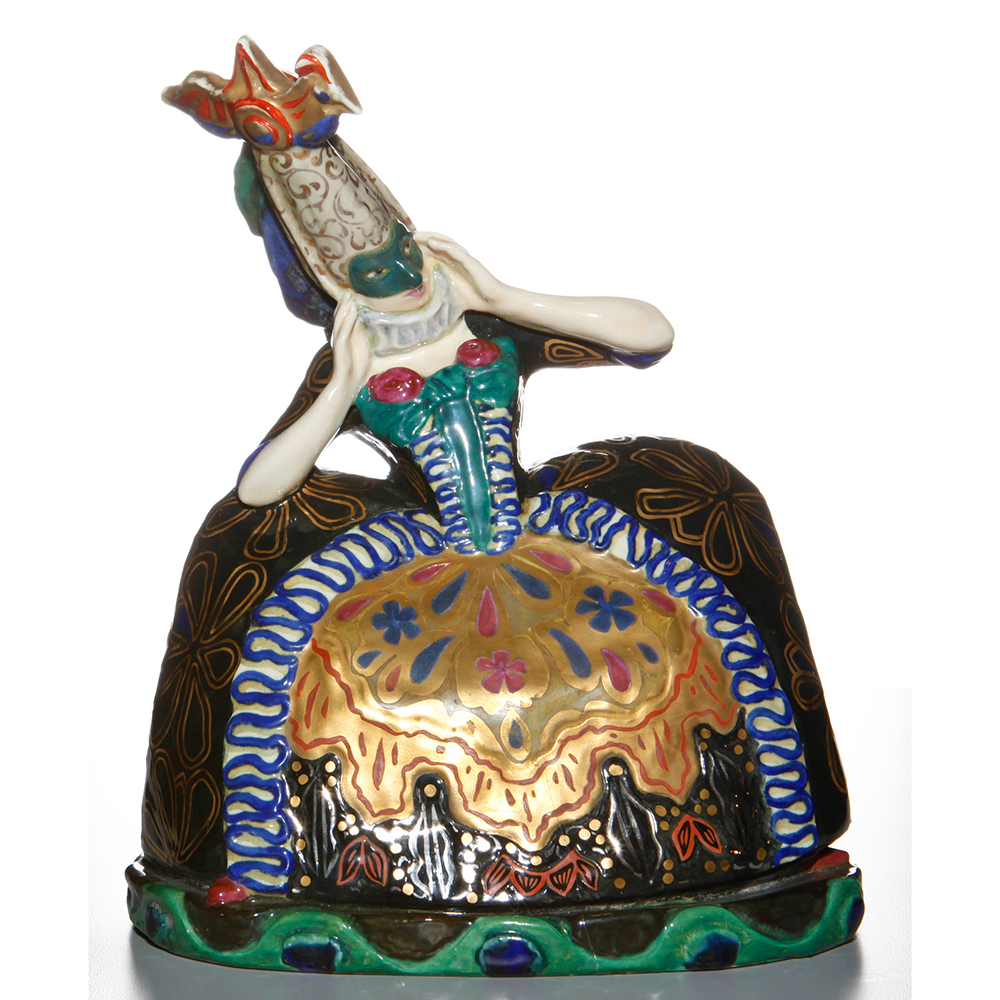
Royal Doulton Marquesa Sylvestre
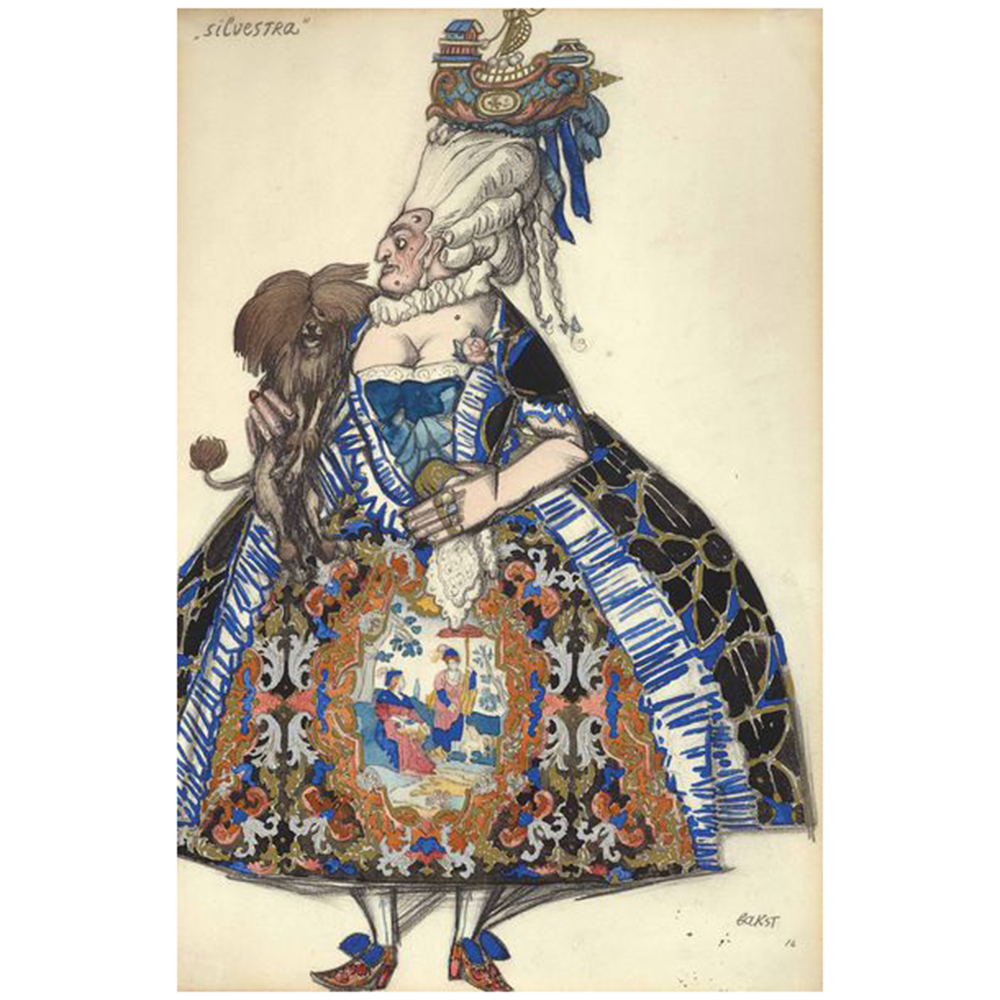
Marquesa by L. Bakst
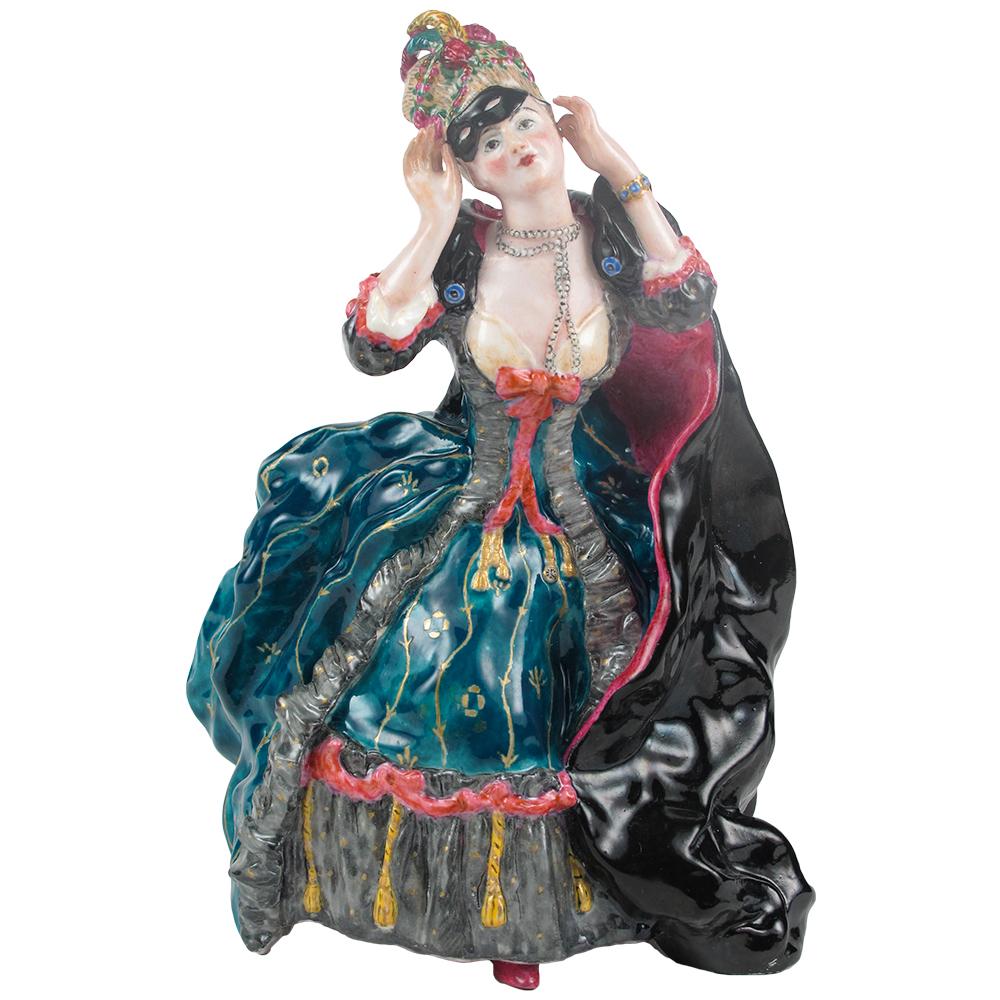
Lomonosov Lady with Mask
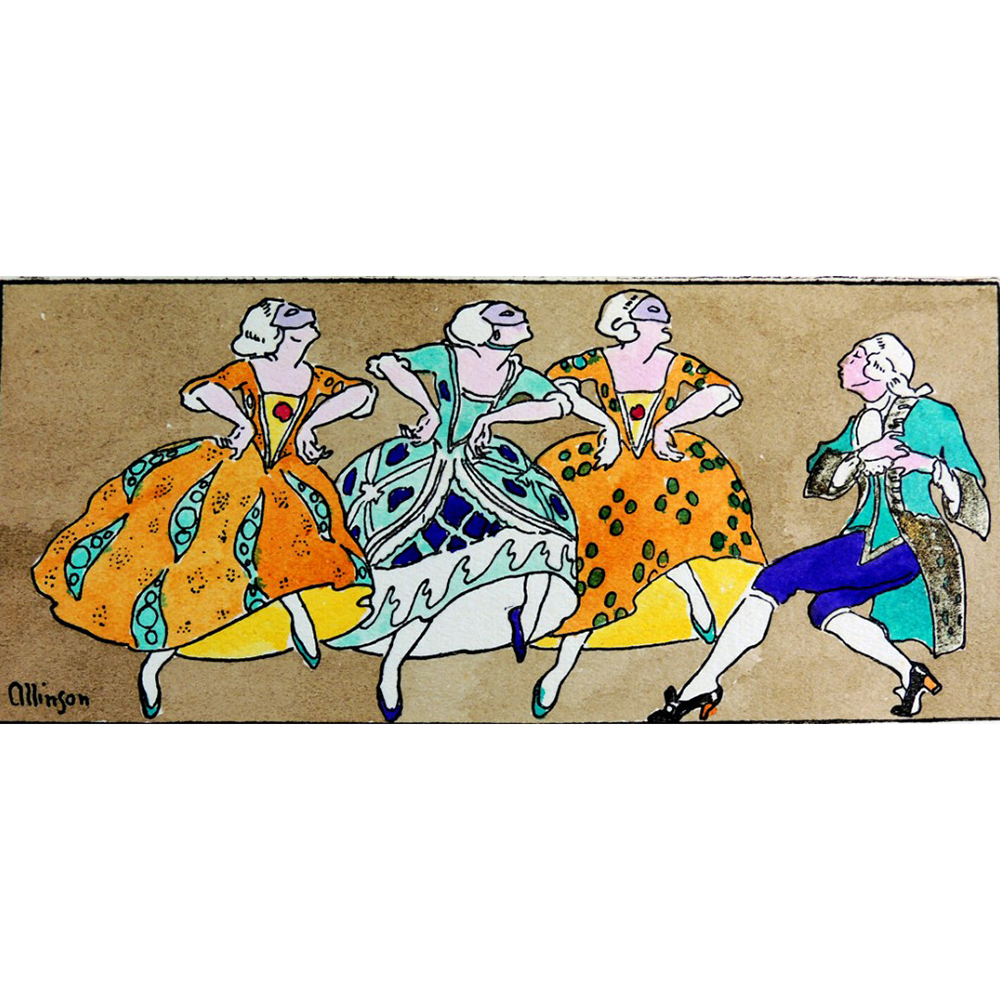
Good Humoured Ladies by A. Allinson
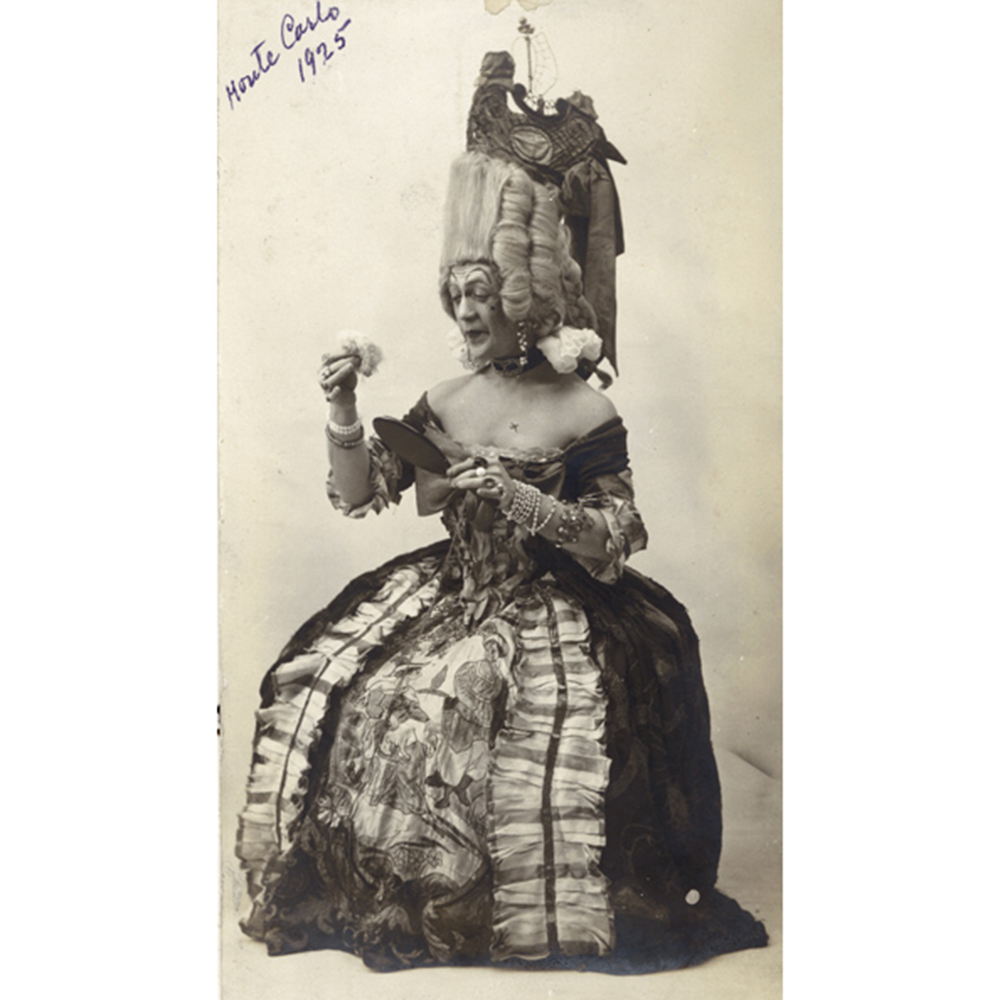
Lomonosov Lady with Mask
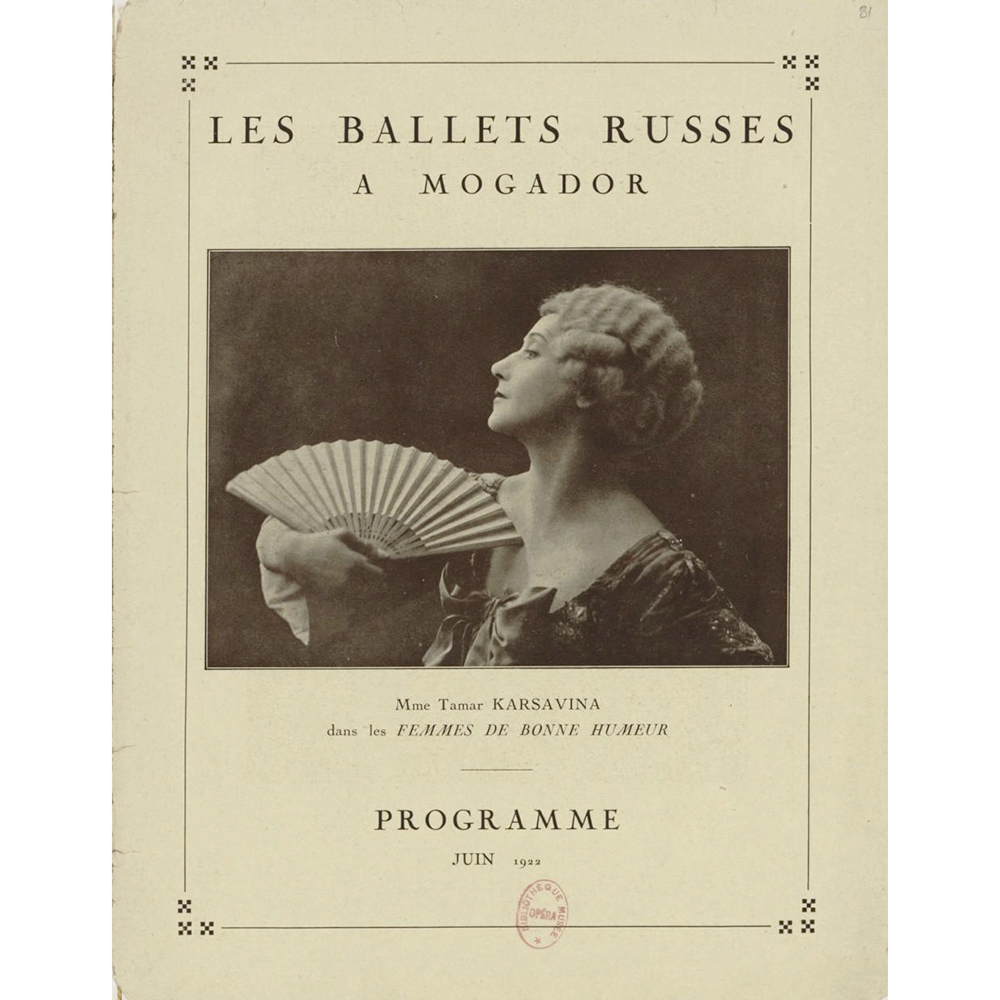
Good Humoured Ladies Playbill
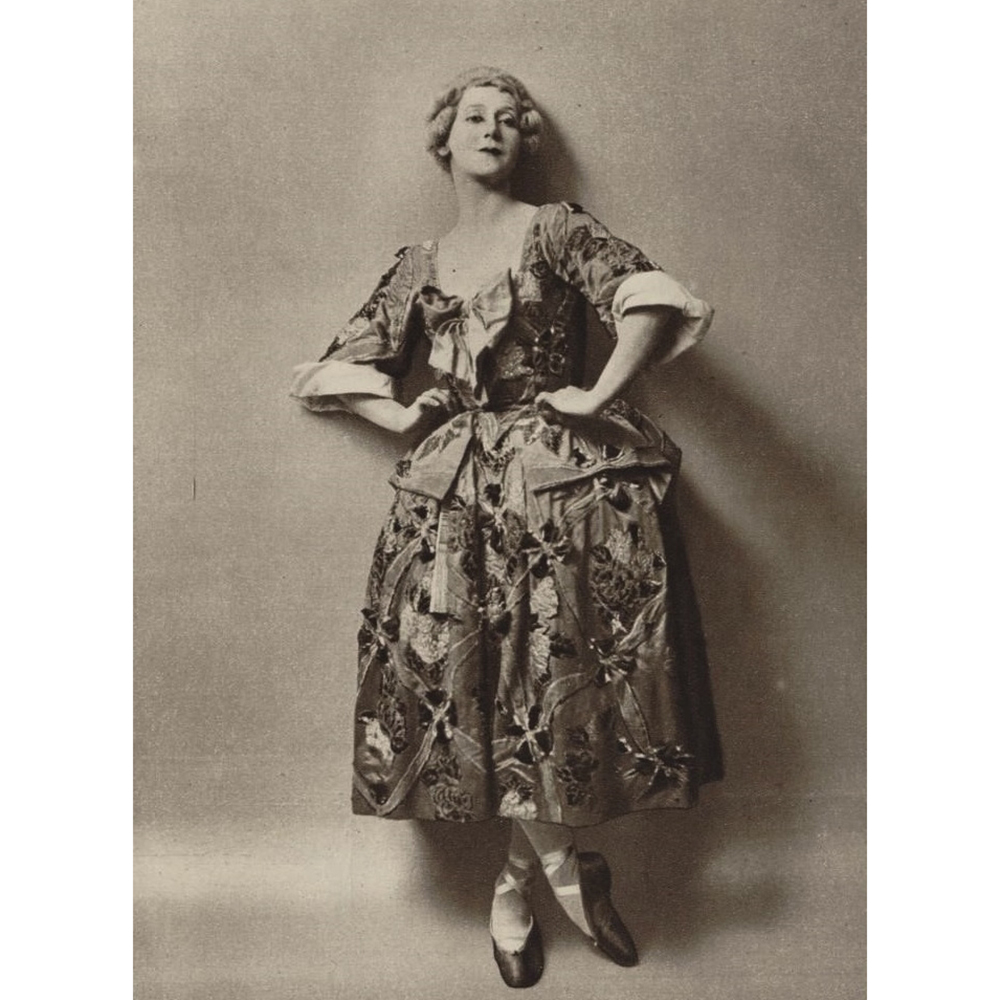
Tamara Karsavina
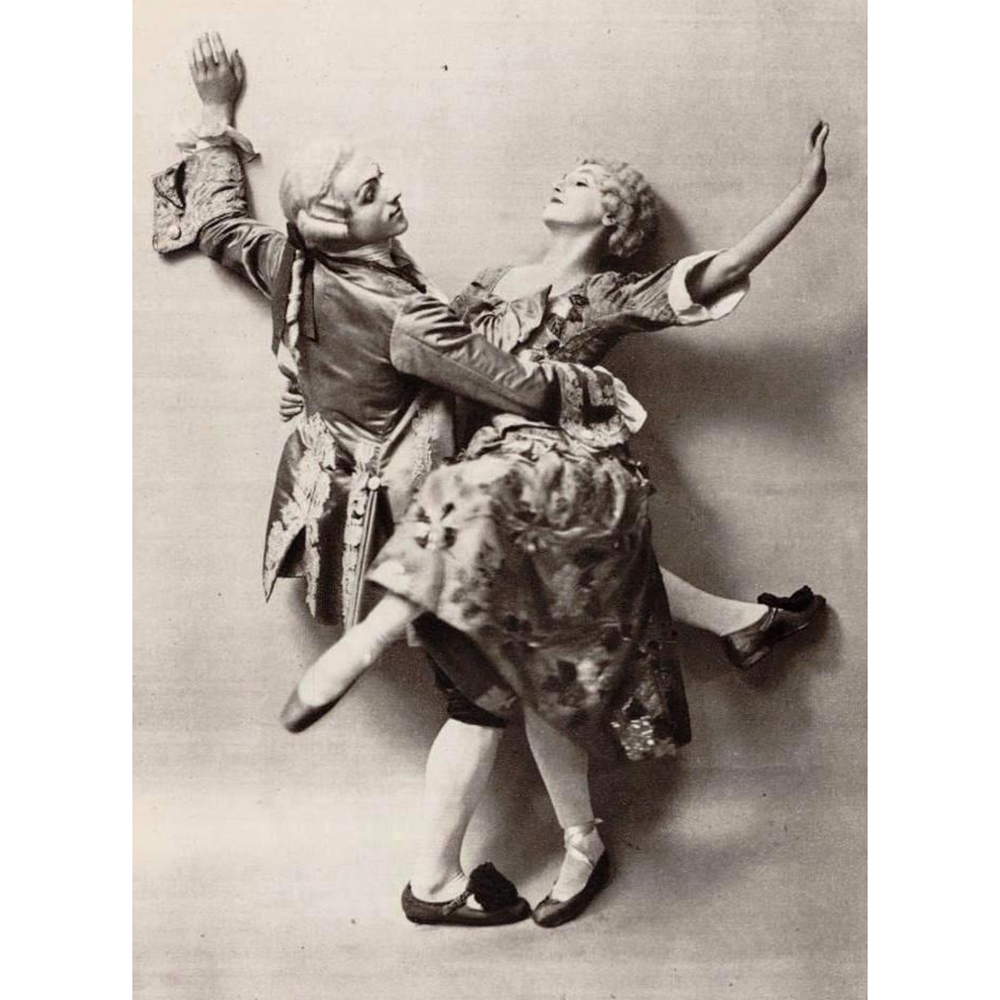
Tamara Karsavina and Leonide Massine in the Good Humoured Ladies
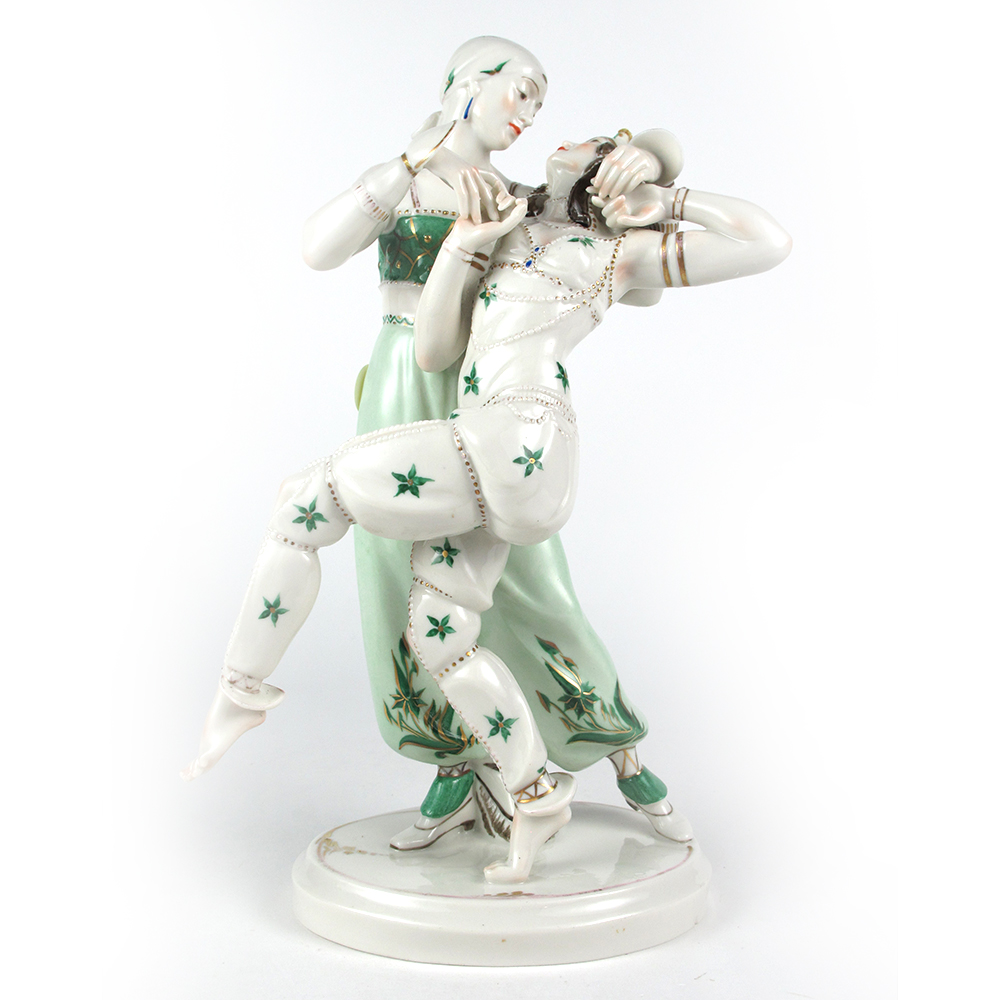
Schwarzburger Schéhérazade
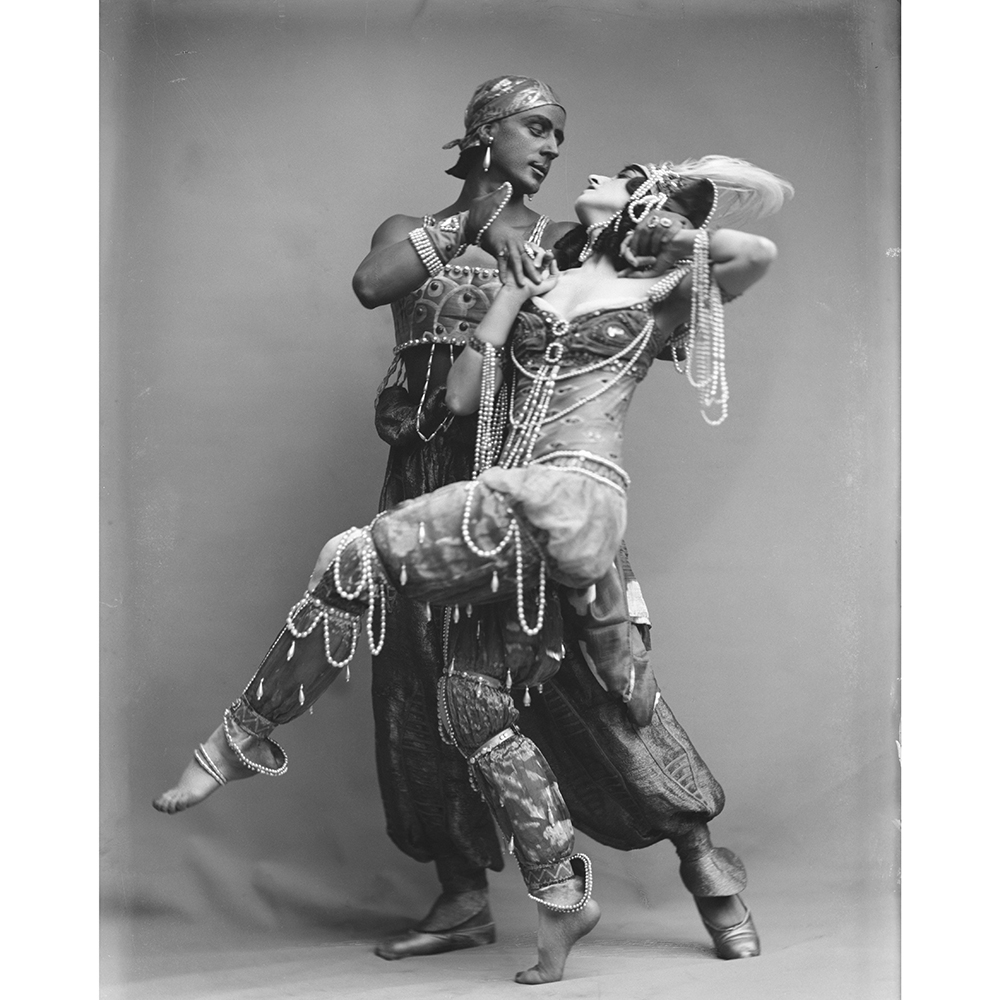
Mikhail Fokin & Vera Fokina in Schéhérazade 1910
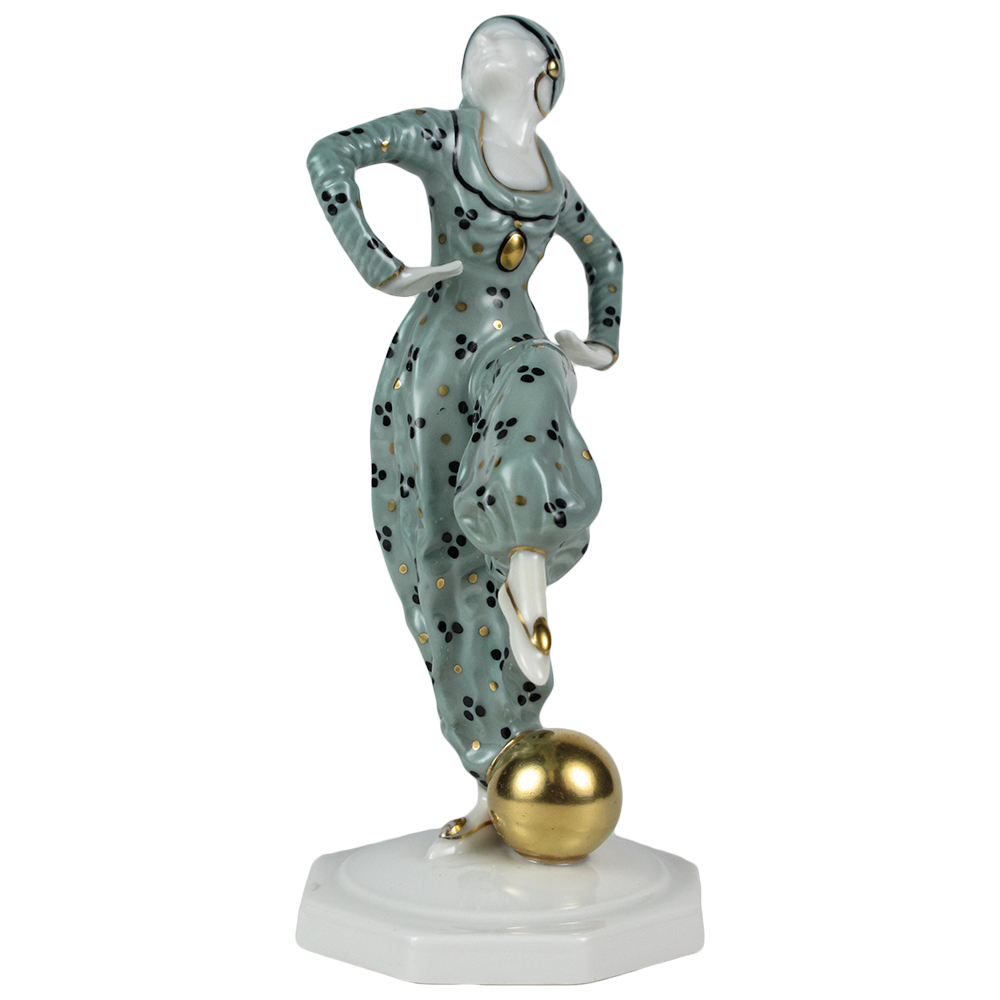
Hutschenreuter Schéhérazade

Lomonosov Lady with Mask
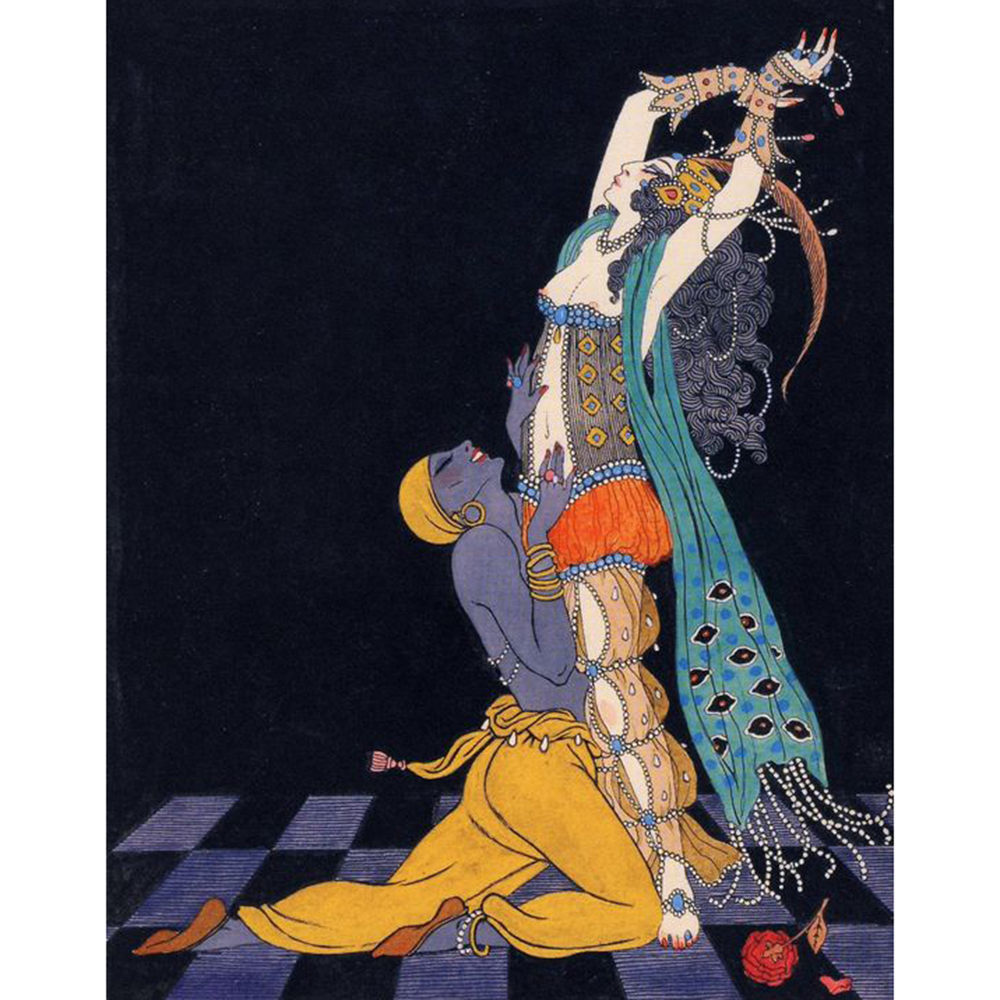
Schéhérazade by Barbier
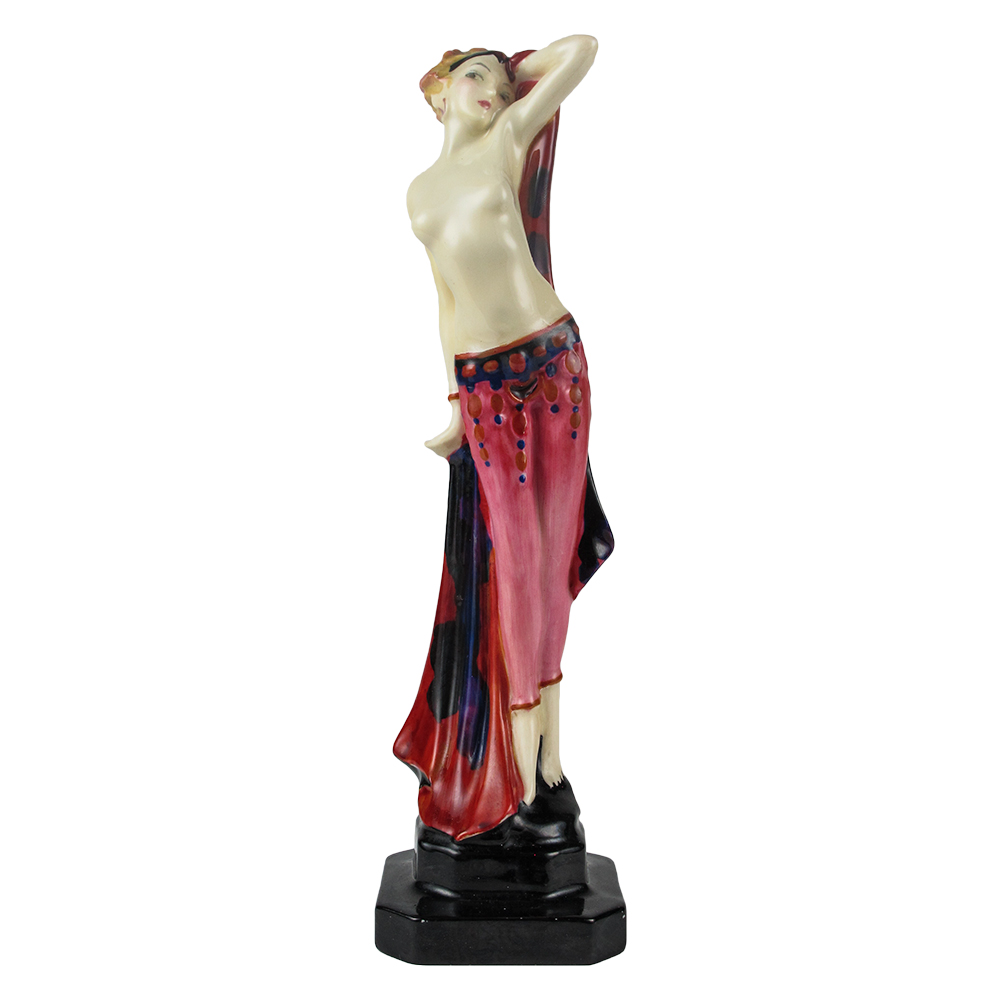
Royal Doulton Carnival
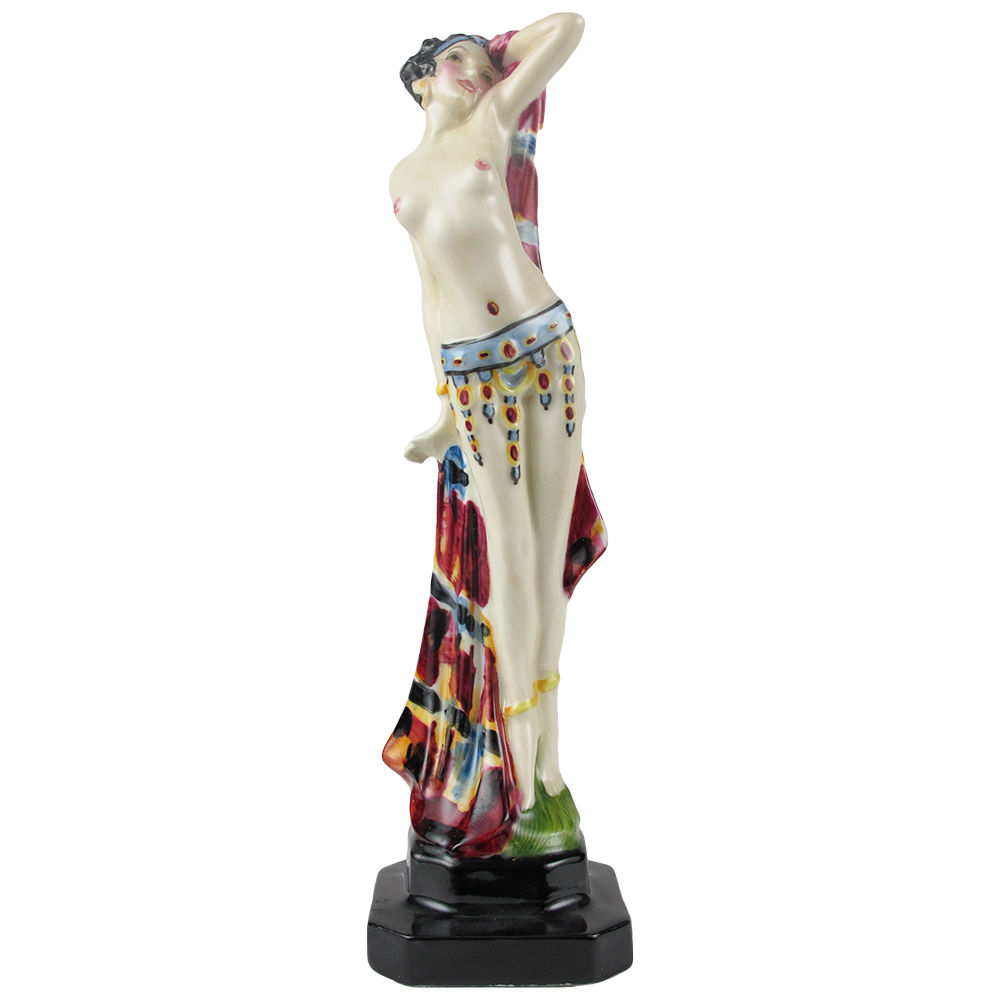
Royal Doulton Carnival
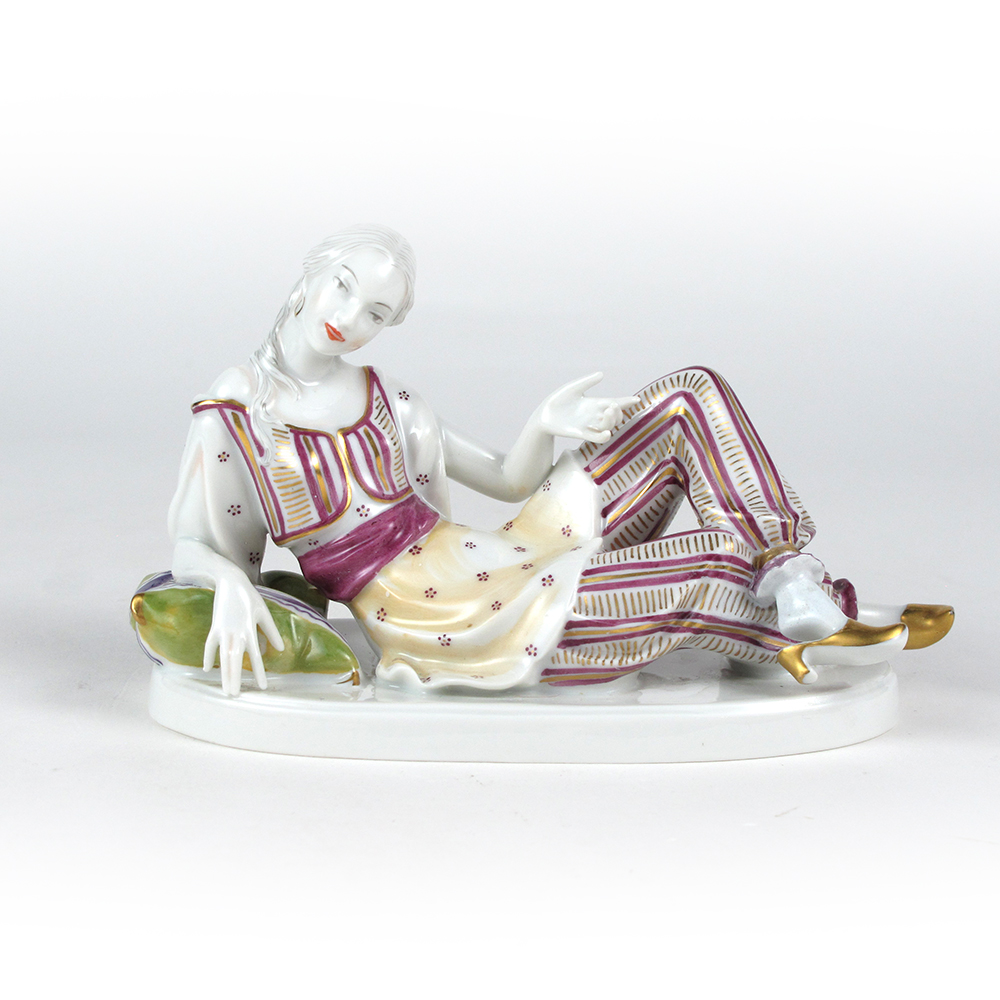
Rosenthal Odalisque
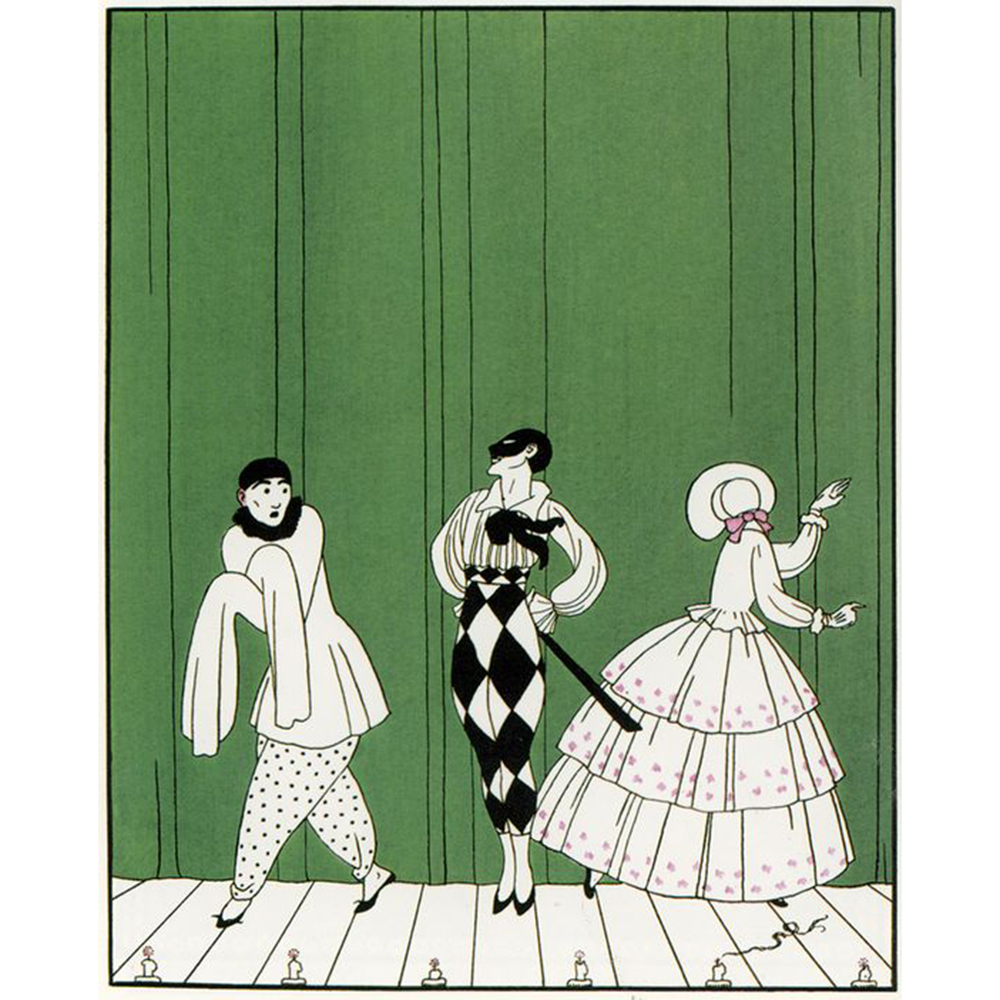
Schwarzburger Schéhérazade
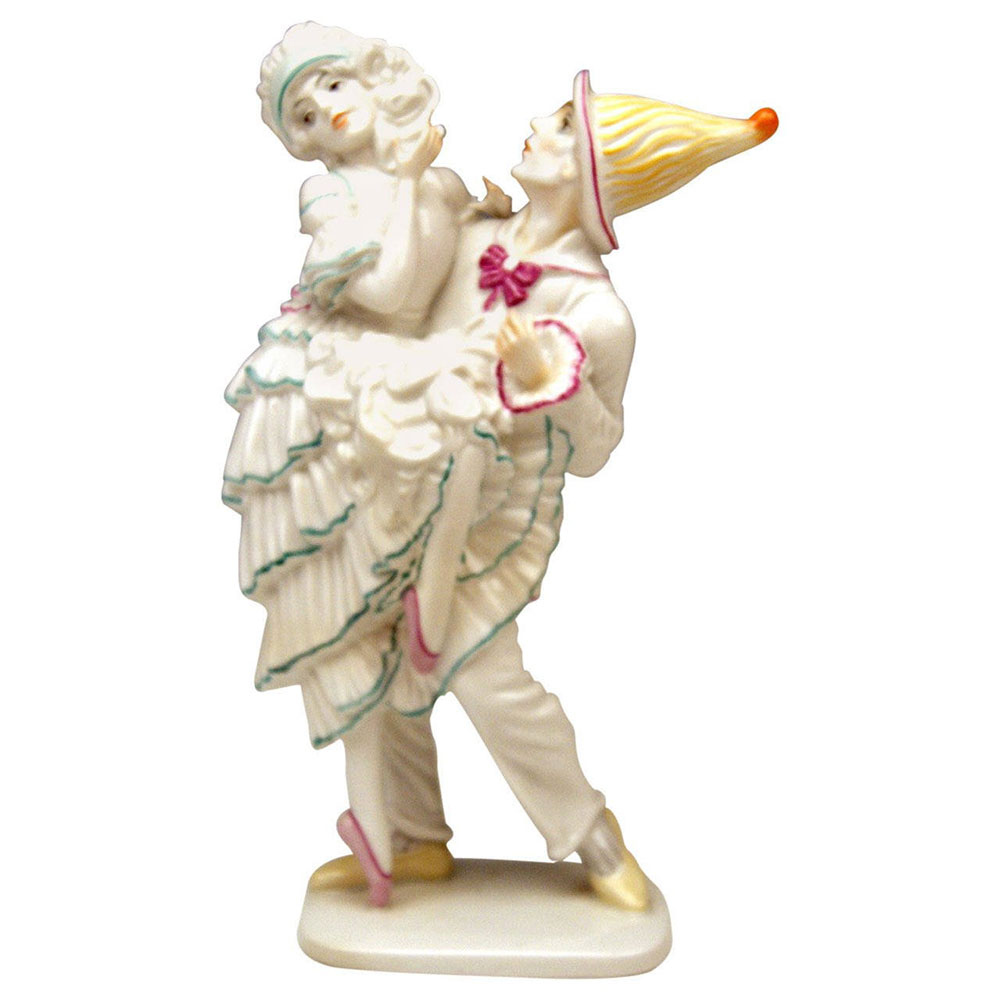
Mikhail Fokin & Vera Fokina in Schéhérazade 1910
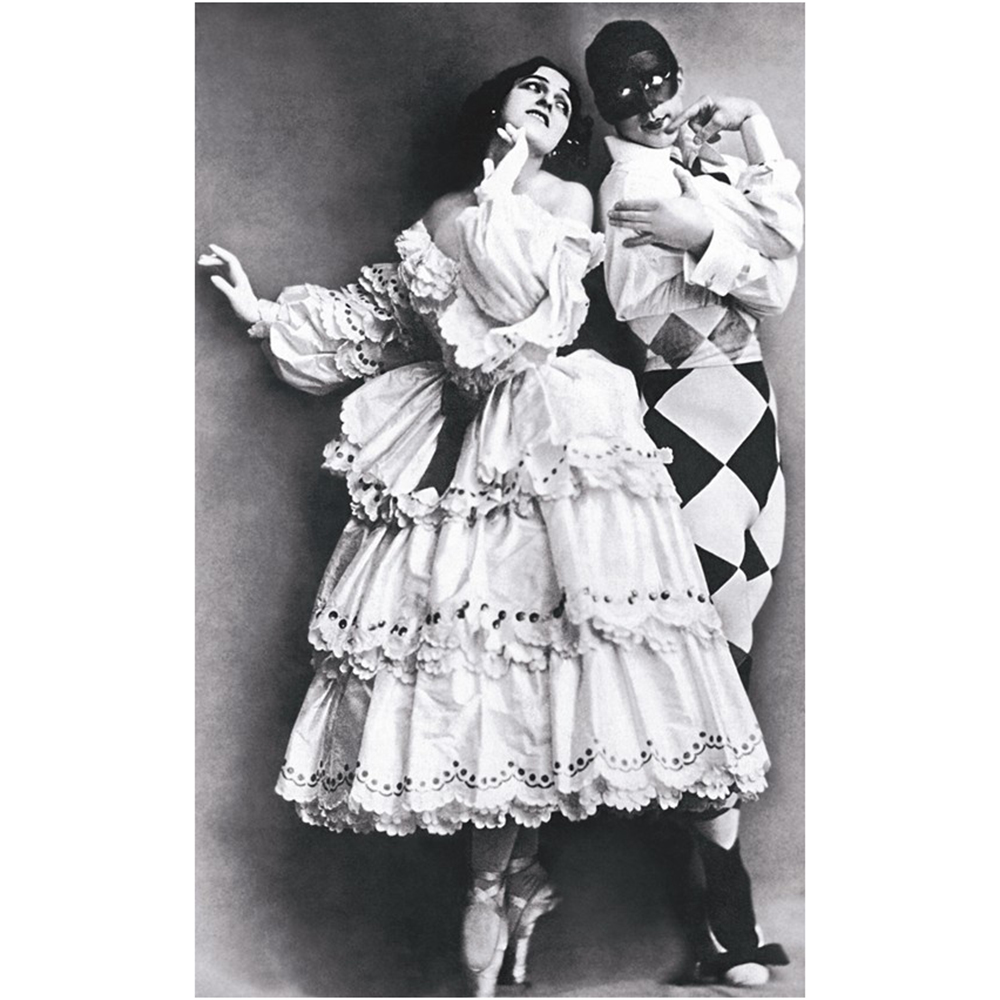
Lomonosov Lady with Mask
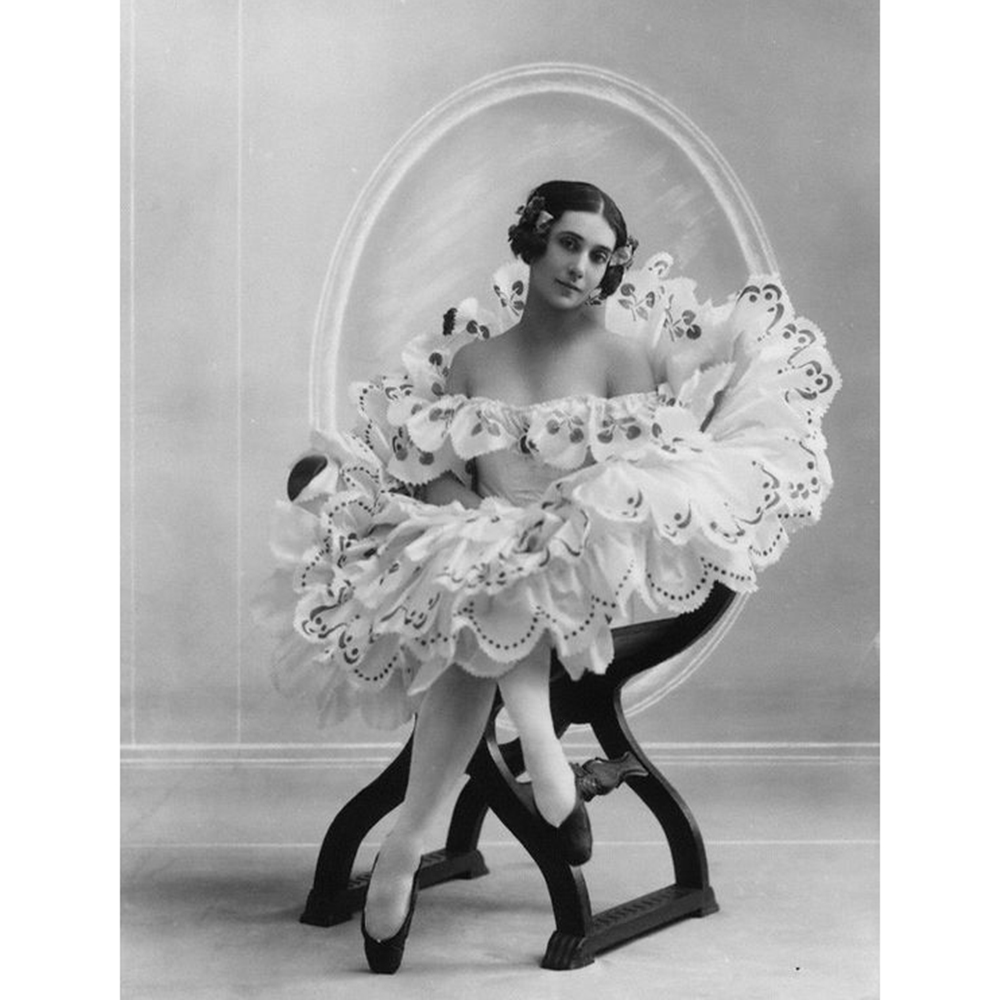
Lomonosov Lady with Mask
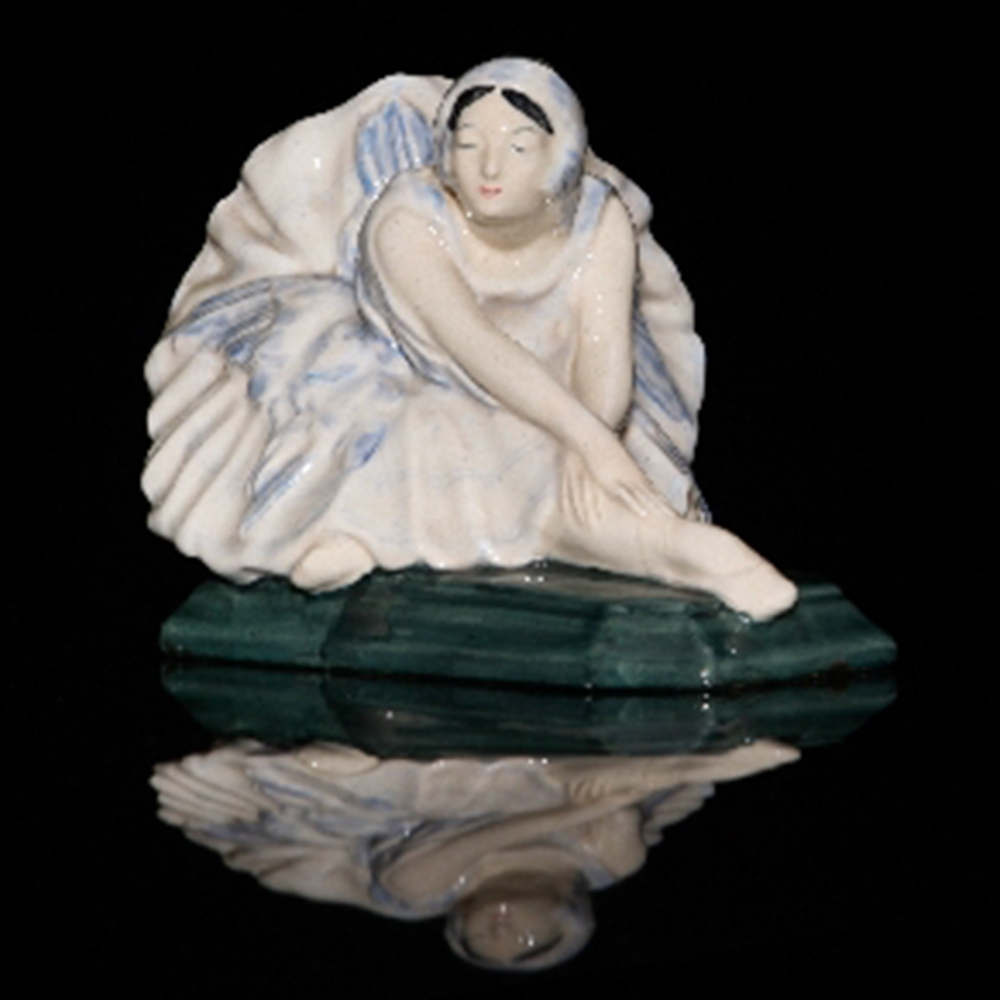
Good Humoured Ladies by A. Allinson
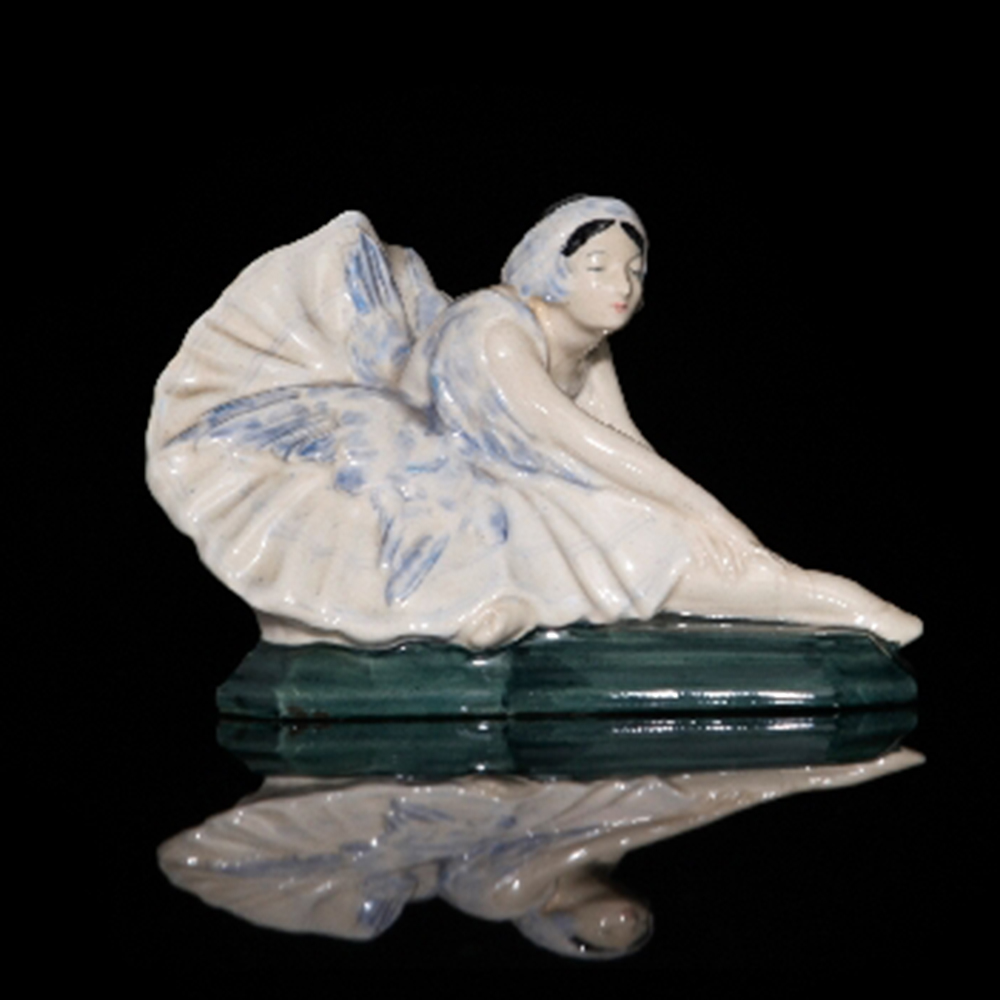
Royal Doulton Anna Pavlo
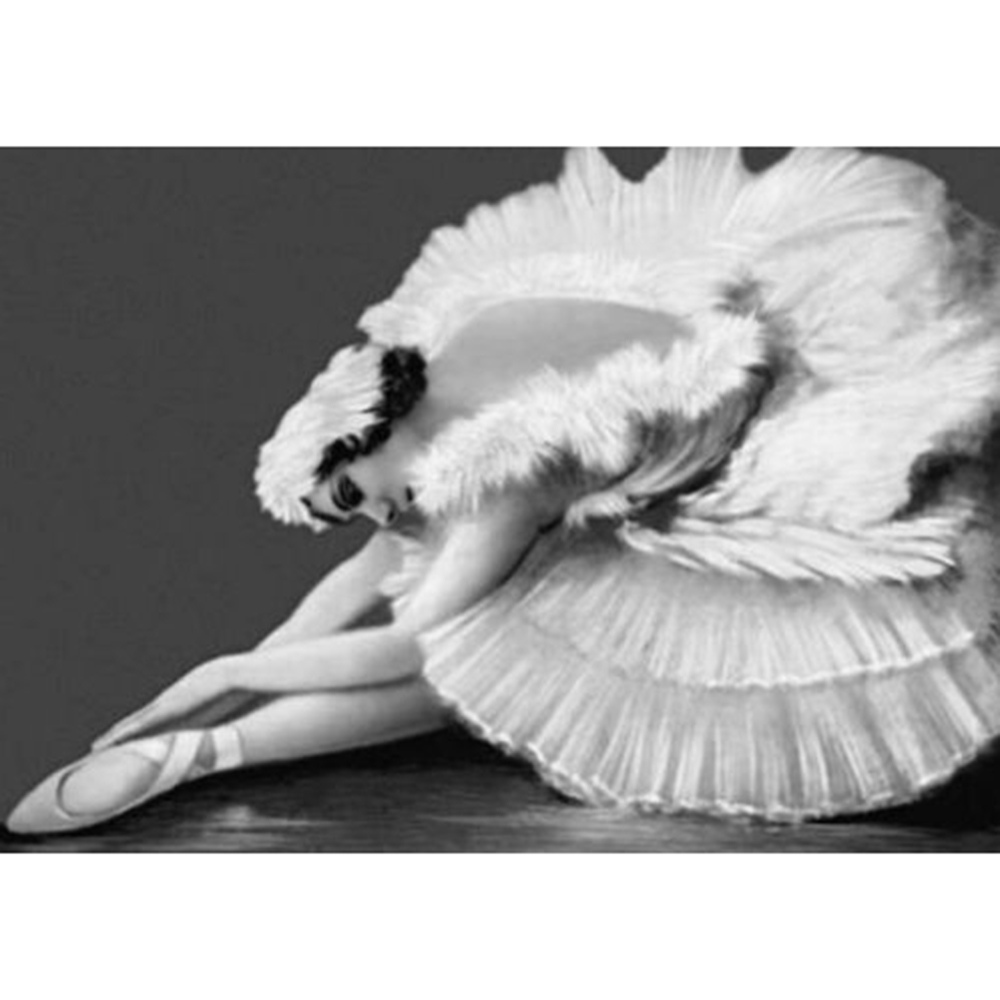
Lomonosov Lady with Mask
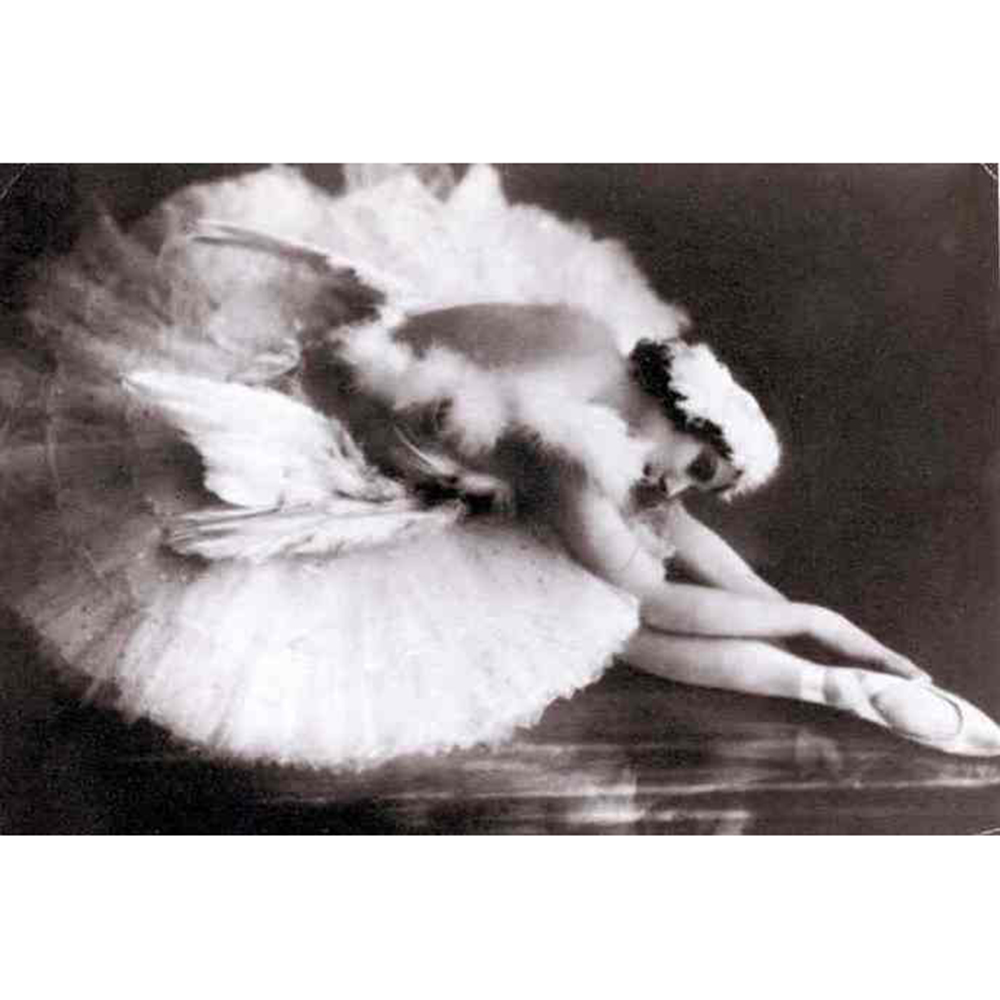
Anna Pavlova as the Dying Swan

Tamara Karsavina
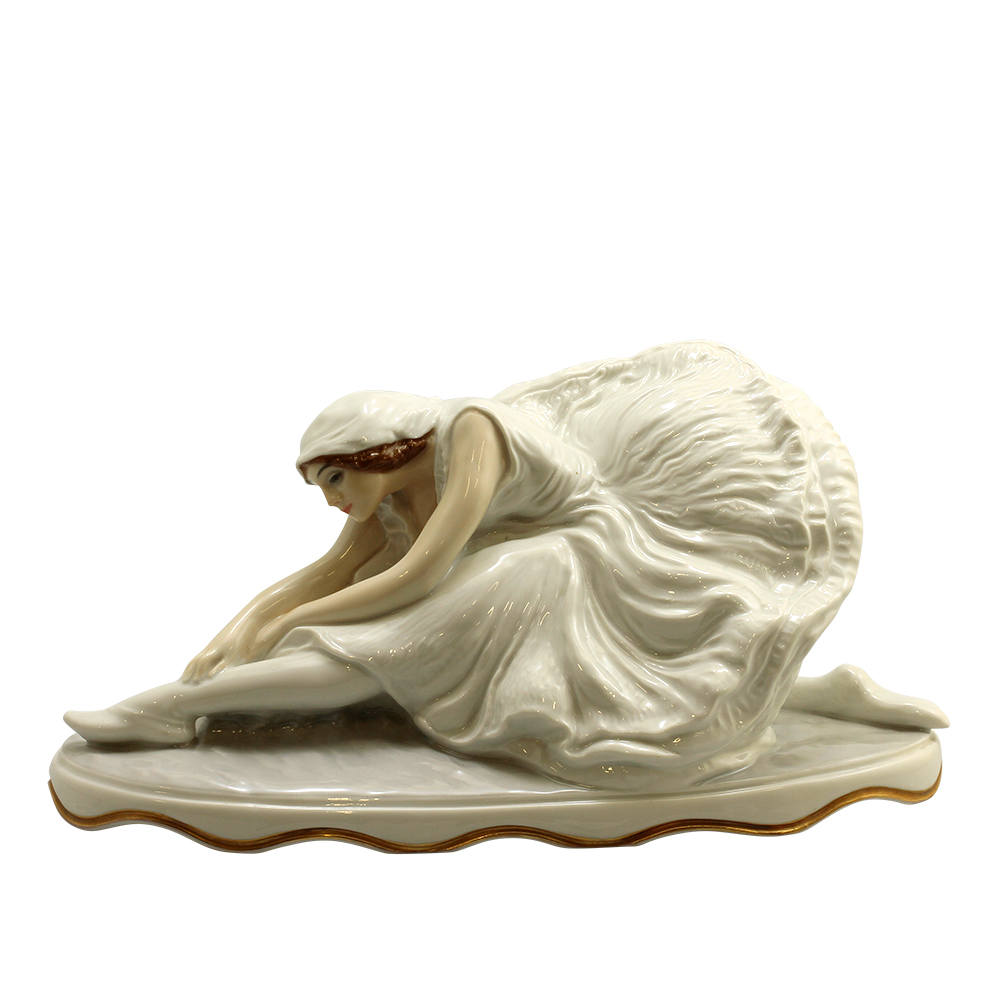
Tamara Karsavina and Leonide Massine in the Good Humoured Ladies
